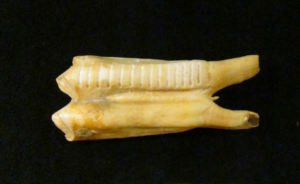My research explores how human-animal relationships shaped systems of value and political power and inequality in the past and how these relationships can be investigated materially through archaeology. I use both zooarchaeology and isotope analysis to illuminate how humans and animals lived together in the past. My recent archaeological fieldwork explores how human-herd animal interactions in the pastoralist societies of the Late Bronze Age (1500-1100 BCE) in the South Caucasus shaped social and political life. I also engage critically with how archaeologists use quantitative methods, such as isotope analysis, to create narratives about the past. Building from my own experience working with archaeological data, my work explores how the scientific analysis of artifacts shapes archaeologists’ interpretations of the past.

I am currently working on a book, Live Stock and Dead Things: Zoopolitics between domestication and modernity (under contract with University of Chicago Press), that explores how human-animal relationships (grounded in material practices) were foundational to systems of value and shaped the organization of political authority in ancient pastoralist societies in the South Caucasus. Taking an innovative approach to zooarchaeological data, the book demonstrates how post-Neolithic, “pre-modern” herding societies were a space of potential — one where the capacities of both humans and herd animals were altered by novel material-semiotic practices and multispecies labor relations, creating value beyond calories or “cash”.
Questioning the ways that archaeological methods (and story-telling more broadly) assume links between the past and present, it argues that herds and herders in the Late Bronze Age were not a middle point between domestication and modernity. The unexpected nature of the entanglements documented for the Late Bronze Age highlights how humans’ relationships with domesticated herd animals in the deeper past did not funnel towards a singular future, marked by instrumental exploitation and inequality, and emphasizes the need to rethink how we link the present and the past (and the future) through our stories about human-animal relationships.
Projects:
Tsaghkahovit Plain (Project ArAGATS)
SCEM for statistical analysis of isotopic time series data
Click here for recent publications